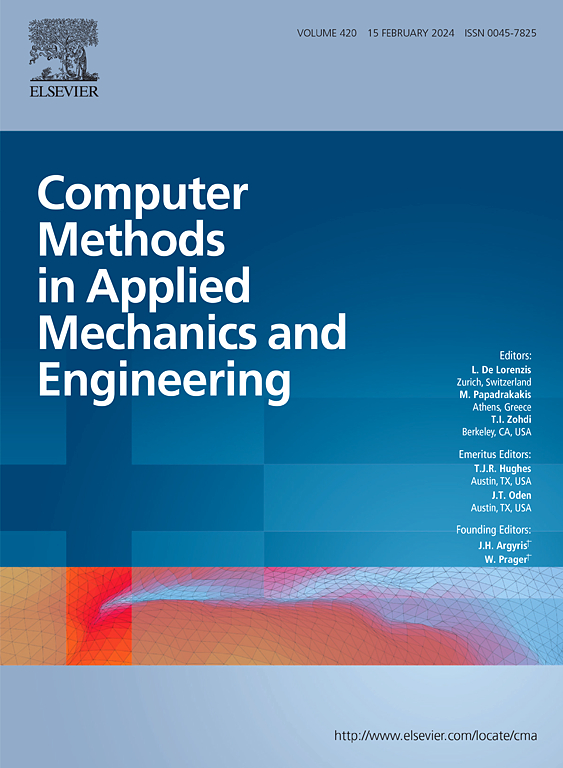流形上密度的生成学习
IF 7.3
1区 工程技术
Q1 ENGINEERING, MULTIDISCIPLINARY
Computer Methods in Applied Mechanics and Engineering
Pub Date : 2025-07-30
DOI:10.1016/j.cma.2025.118266
引用次数: 0
摘要
提出了一种结合扩散模型和流形学习的生成建模框架,以有效地对流形上的数据密度进行采样。该方法利用扩散图(Diffusion Maps)在高维数据(环境)空间中发现可能的低维底层(潜在)空间。描述了从潜在数据密度中采样的两种方法。第一种是基于分数的扩散模型,该模型被训练成使用神经网络将标准正态分布映射到潜在数据分布。第二个是在潜在空间中求解Itô随机微分方程。数据的附加实现是通过使用双扩散图(Double Diffusion Maps)将样本提升回环境空间来生成的,双扩散图是一种最近引入的技术,通常用于研究动力系统约简;这里的重点在于采样密度而不是系统动力学。所提出的方法可以对高维数据密度进行采样,限制在低维先验未知流形中。通过一个基准问题和具有多尺度结构的材料验证了该框架的有效性。本文章由计算机程序翻译,如有差异,请以英文原文为准。
Generative learning of densities on manifolds
A generative modeling framework is proposed that combines diffusion models and manifold learning to efficiently sample data densities on manifolds. The approach utilizes Diffusion Maps to uncover possible low-dimensional underlying (latent) spaces in the high-dimensional data (ambient) space. Two approaches for sampling from the latent data density are described. The first is a score-based diffusion model, which is trained to map a standard normal distribution to the latent data distribution using a neural network. The second one involves solving an Itô stochastic differential equation in the latent space. Additional realizations of the data are generated by lifting the samples back to the ambient space using Double Diffusion Maps, a recently introduced technique typically employed in studying dynamical system reduction; here the focus lies in sampling densities rather than system dynamics. The proposed approaches enable sampling high dimensional data densities restricted to low-dimensional, a priori unknown manifolds. The efficacy of the proposed framework is demonstrated through a benchmark problem and a material with multiscale structure.
求助全文
通过发布文献求助,成功后即可免费获取论文全文。
去求助
来源期刊
CiteScore
12.70
自引率
15.30%
发文量
719
审稿时长
44 days
期刊介绍:
Computer Methods in Applied Mechanics and Engineering stands as a cornerstone in the realm of computational science and engineering. With a history spanning over five decades, the journal has been a key platform for disseminating papers on advanced mathematical modeling and numerical solutions. Interdisciplinary in nature, these contributions encompass mechanics, mathematics, computer science, and various scientific disciplines. The journal welcomes a broad range of computational methods addressing the simulation, analysis, and design of complex physical problems, making it a vital resource for researchers in the field.

 求助内容:
求助内容: 应助结果提醒方式:
应助结果提醒方式:


